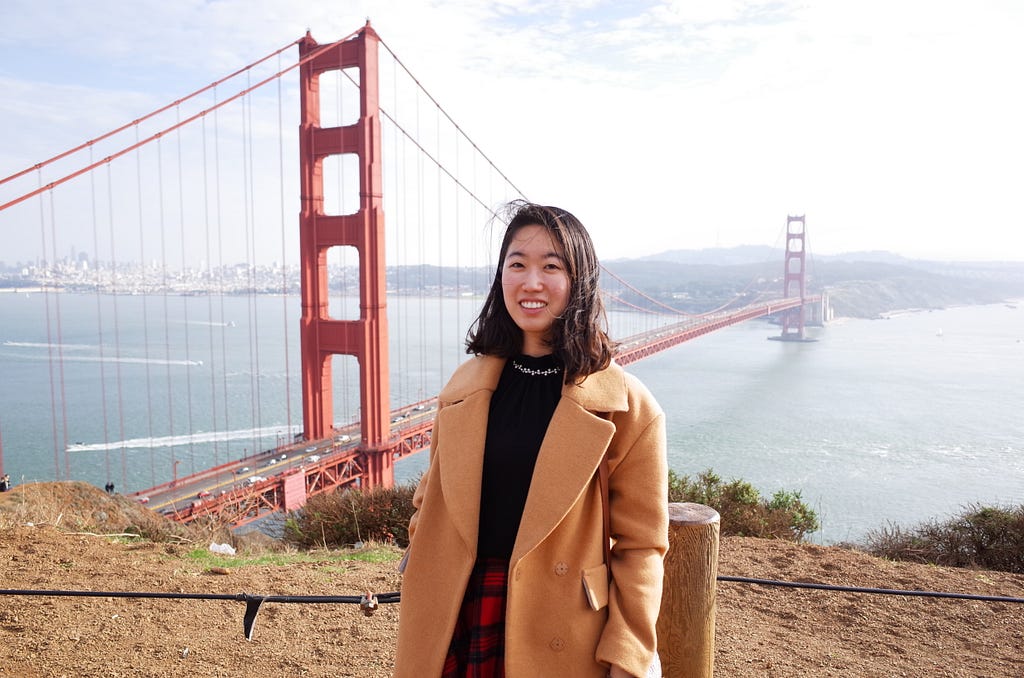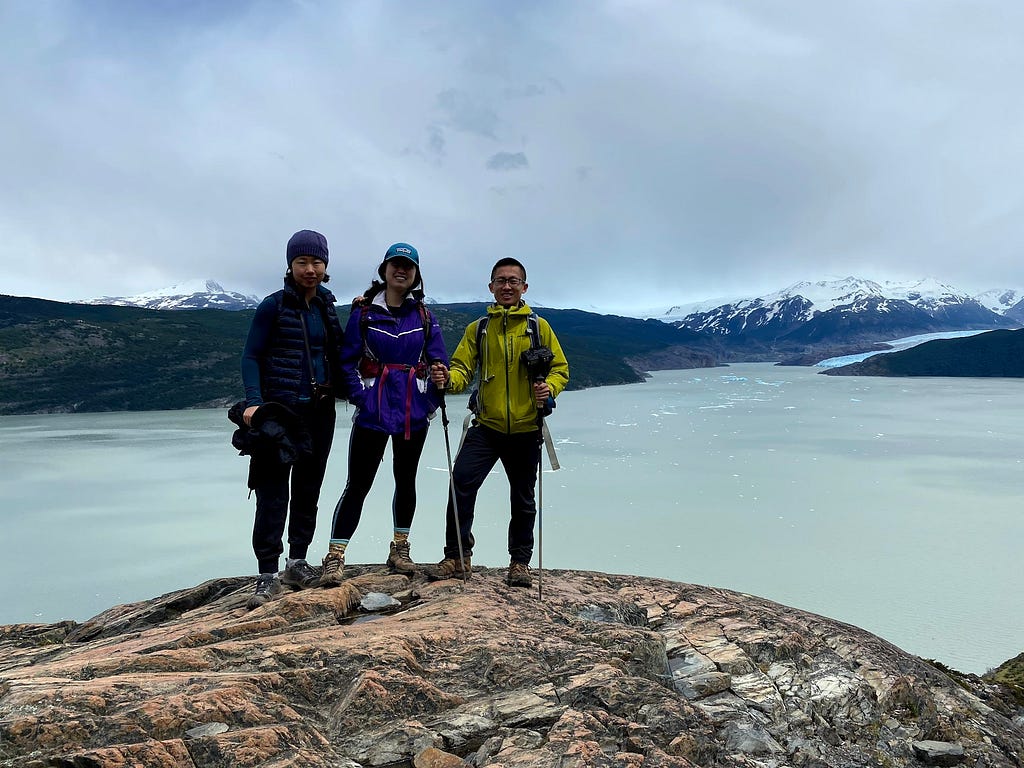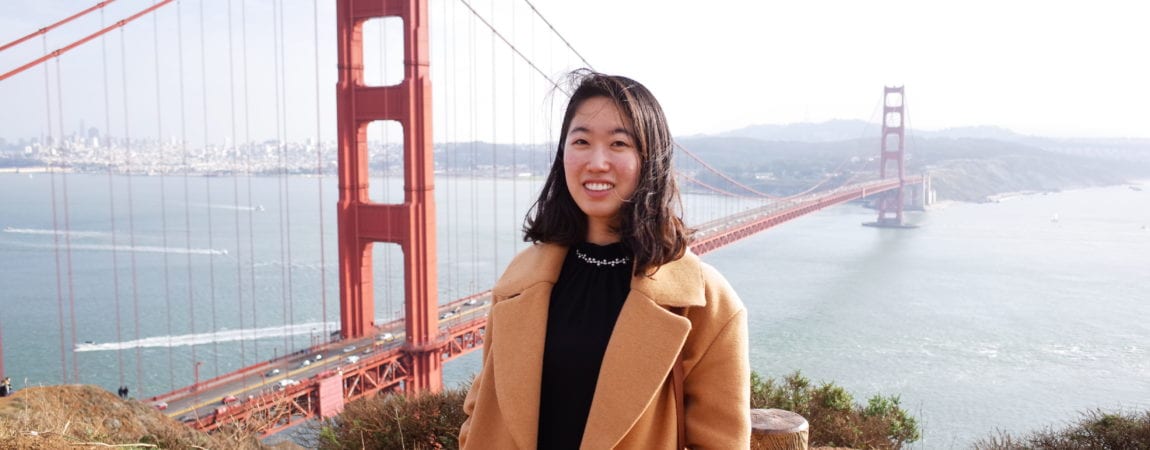On that proving girls can do well in STEM, the importance of data in business, and slowing down with landscape photography.
Liaowang (Zoey) is a current MEng candidate studying Electrical Engineering & Computer Sciences (EECS) with a concentration in Data Science and Systems. Here, Zoey shares about becoming interested in STEM as a child, previous work experience in consulting and why she decided to come back to school, and her capstone project on detecting incipient disease using artificial intelligence (AI) models.
Can you share a brief overview of your path to the MEng program?
I was a bit all over the place before coming to the Bay Area. I grew up in a small city called Jiujiang by the Yangtze River in China. After middle school, I was awarded a Singapore government scholarship. I spent four years in Singapore and it opened up a world of opportunities for me. While I was in junior college (high school), I was having a hard time deciding where to go for college. As someone who wants to try a bit of everything, I wasn’t sure which major to choose before even starting college, which was required for Singapore and UK university applications. My school counselor asked me if I was interested in US colleges. That’s how I ended up at Duke. During my time at Duke, I discovered my interest in statistics. I also became fascinated in American politics after taking an Introduction to Policy Analysis course. I used to think of political science as a pure humanity. But the class made me get a taste of the interplay of analytical aspects and behavior components to public policy which intrigued me. As a result, I declared my double major in statistics and public policy in my sophomore year. I spent a summer in Durham, NC and Durham, England (they are sister cities!) doing a service learning program called Duke Engage and spent seven months in Berlin for a study abroad program. After graduating from Duke in 2017, I moved to San Francisco to work in consulting and stayed in the Bay Area.What led you to pursue engineering, and more specifically, to study EECS?
I became interested in STEM trying to prove that girls can do well in STEM. My Chinese name is not particularly feminine. I remember the time when my name was called in a mathematics contest award ceremony in my middle school, I got a comment from the crowd: “I thought that was a boy.” It was hard to tell whether my name just sounded too masculine or there was an implicit assumption that the first place in a math competition should be a boy. After that, I picked the science stream in middle school and high school, which laid a solid foundation in engineering. I didn’t pursue an engineering degree at Duke, but I always find the cross-section of theory and application intriguing. Taking courses in statistics and computer science allowed me to appreciate the powerful complement of these two disciplines. As I was working through my Python assignments from the Introduction to Computer Science course in my Sophomore year, I didn’t expect it to come into handy until I helped with a research project in Fuqua School of Business analyzing earning call transcripts and real-time stock prices. The idea of building a reusable tool — could be a program, a visualization or an algorithm from scratch — that enables us to understand the world around us or improve the efficiency of analysis of all other disciplines is rewarding. That is what drove me to EECS.“The idea of building a reusable tool — could be a program, a visualization or an algorithm from scratch — that enables us to understand the world around us or improve the efficiency of analysis of all other disciplines is rewarding.

What has been your prior work experience, and what led you to come back to school?
After graduating from Duke, I worked at a consulting firm specializing in Telecommunications, Media, and Technology (TMT) industries. I joined as a business analyst and was promoted to senior analyst after 18 months. During my time there, I worked on strategy projects covering a wide range of topics including data centers, cyber security, consumer broadband etc. From a diverse range of projects, I found myself particularly interested in those that involve discovering insights from large amounts of data. At the same time, our firm was actively spinning up an advanced analytics team. So I joined the team as an early member and took on a data science role. One thing that is clear from my consulting experience is my interest to utilize computational tools and statistical modeling to drive business decisions. The increasing data availability represents huge opportunities for businesses to improve operations and better serve their customers at scale. This does not only apply to the technology industry, but also industries that are not traditionally known for technology and innovation.“The increasing data availability represents huge opportunities for businesses to improve operations and better serve their customers at scale.”I also spent a summer working at a data platform start-up, and discovered my affinity for product development. In both cases, having a solid technical background would be beneficial for my future career. Hence, to further advance my technical skills and gain deeper insight into how state-of-the-art computational techniques are applied in industry context, I decided to come back to school and enrolled in the MEng program in EECS with a concentration in Data Science and Systems.
What is your capstone project?
My capstone project is Detection and Diagnosis of Incipient Diseases in collaboration with UCSF to develop methods for building reliable and meaningful AI models to detect and diagnose emerging diseases like COVID-19. I do not have a biology nor medical background, but find this topic extremely relevant, especially in the current climate. Our project aims at developing a new model selection algorithm that allows us to construct an AI model that is accurate at detecting incipient diseases before they progress into something more serious. The project is going well. It is a smaller-than-usual team because of the COVID situation. There are only two members (myself included) in our capstone project team. But as a result, we are able to work more closely with other researchers in Prof. Alberto Sangiovanni-Vincentelli’s research group. Because the capstone project is part of a bigger research effort in partnership with UCSF, we have plenty of room to scope our project that fits our strengths and interests. We have caught up-to-speed with their existing work and have made progress in the new direction.
What is something you’re passionate about and why?
I am passionate about landscape photography, which also gives me a reason to travel. One of my reasons for moving to California is the proximity to national parks. I am constantly amazed by the beauty of nature and feel fortunate to have the opportunity to witness it and capture it. Landscape photography also teaches me to slow down. Often, I need to wait for hours, even days, to get the perfect shot. This forces me to break from the daily routine of constantly doing something or going somewhere. Instead, I get to truly appreciate the beautiful landscape surrounding me, strike a conversation with my travel buddies, and just pause and think. (See more of Zoey’s photography.)“Landscape photography also teaches me to slow down.”
How is the virtual semester going for you?
My virtual semester is going well. I still moved to the Berkeley area despite knowing that everything was going virtual. After three years of working, I am excited about going back to school and being close to campus is reminiscent of my student life. Of course, it’s not the same when everything is online. But I still manage to meet other students through my program and my classes.”
Fung Feature: Liaowang Zou, MEng ‘21 (EECS) was originally published in Berkeley Master of Engineering on Medium, where people are continuing the conversation by highlighting and responding to this story.





